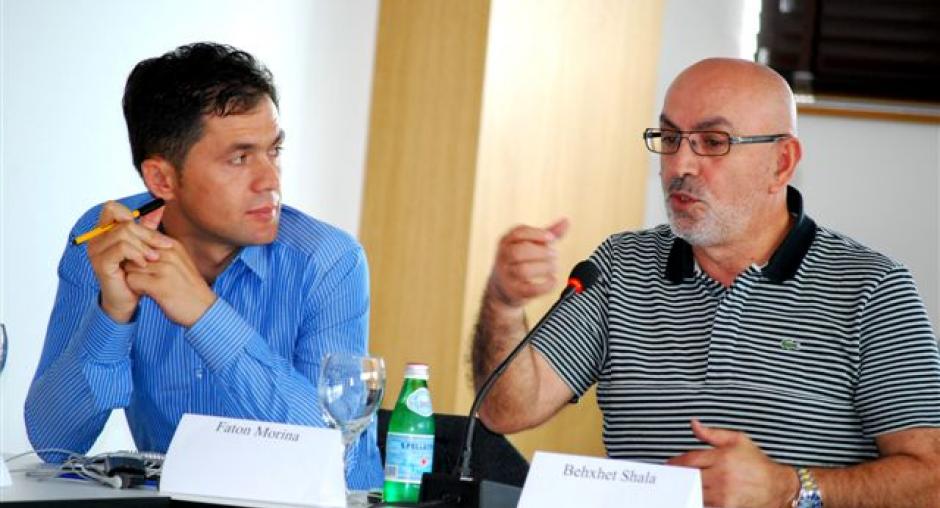OSCE strengthens detention monitoring in Kosovo
Alban Muriqi recently joined the Kosovo Rehabilitation Centre for Torture Victims (KRCT), a local OSCE-supported human rights NGO. He monitors detention facilities and checks if the detainees are treated with dignity and their human rights are respected.
Muriqi and his colleagues, who include legal experts and doctors, visit over ten detention facilities throughout Kosovo, at least twice a year, to verify their adherence to international human rights standards.
“When we get to a detention facility, we meet the manager and then we spread out. I interview several inmates, while other team members inspect the kitchen, visit the clinic, and check for basic conditions like light, space and availability of running water,” Muriqi says.
He adds that monitoring is important to identify problems, which are referred to facilities managers and other relevant institutions, including the Ministry of Justice.
Respecting rights, reporting wrongs
A year ago, the OSCE Mission in Kosovo identified a number of shortcomings relating to the conditions in some detention facilities which could constitute a violation of international human rights standards.
“Despite generally satisfactory conditions, in some of the detention facilities we identified problems relating to the number of people held in one cell. For example, in one case, six people were held in a cell big enough only for three,” says Kirsten Joppe, chief of the OSCE Mission’s Security Monitoring Section. “Other concerns included poor ventilation, unsuitable toilets and showers,” she adds.
To help ensure that the rights of detainees are respected, the Mission is now helping establish a local detention monitoring mechanism that will provide sustainable and long-term detention monitoring across Kosovo.
Encouraging co-operation
Other groups in Kosovo monitor detention facilities as well as the KRCT. The Council for Defence of Human Rights and Freedoms (CDHRF) also works in this area, and the Ombudsperson is mandated by the authorities with monitoring the facilities.
According to Joppe, the monitoring efforts by these three bodies lead to greater attention being given to detention facilities. However, she notes that the work was not as systematic or transparent as it could be. “It did not appear that all detention facilities were regularly monitored or that the monitoring activities were well co-ordinated.”
To help co-ordinate efforts and the use of resources, as well as develop a common approach to detention-facility monitoring, in May this year the OSCE Mission facilitated an agreement of co-operation between the three entities.
“It was a first step towards establishing a transparent and sustainable system of regular visits,” says Joppe. According to the Ombudsperson Institution’s representative, Faton Morina, the agreement will enable the three parties to effectively complement one another’s efforts. “We can use their expertise, while in return we can help them thanks to our legal right to unannounced visits,” he says.
Entrenching the network
To be fully functional, the network will need a joint task force that will ensure co-ordinated visits, the division of duties and a common approach to monitoring. “It will also help ensure that no facility is left unvisited,” stresses Joppe, adding that efforts are now being made in this direction.
On 27 June the Mission organized a three-day training session for over 40 staff members from the three organizations. The participants were trained in communication skills and organizational strengthening, as well as in technical skills, such as interviewing techniques and reporting. The event also included experts from across the region, invited by the OSCE Mission.
“Important tasks lay ahead of these three bodies in terms of structuring their joint efforts, defining standardized approaches towards reporting and follow-up of cases and, last but not least, raising funds for their monitoring activities,” concludes Joppe.
Written by Mevlyde Salihu and Nikola Gaon

